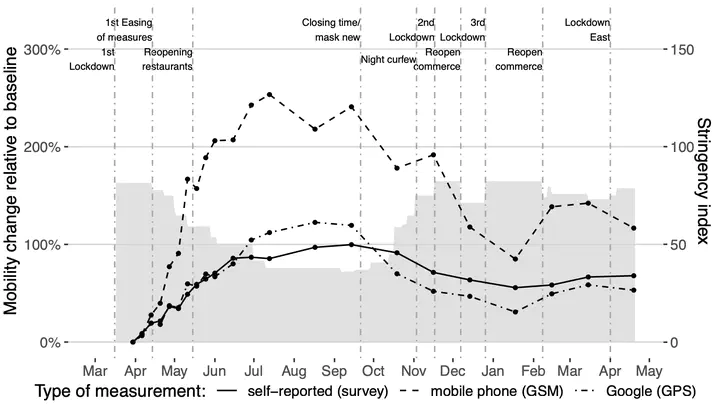Preprint: Varieties of mobility measures: Comparing survey and mobile phone data during the COVID-19 pandemic
 The black lines represents average mobility change relative to the baseline (Mar 23 – 29, 2020). The gray area indicates the COVID-19 stringency index[0-100] (containment and closure policies) for Austria.
The black lines represents average mobility change relative to the baseline (Mar 23 – 29, 2020). The gray area indicates the COVID-19 stringency index[0-100] (containment and closure policies) for Austria.Abstract
Measures to reduce individual mobility are prime governmental non-pharmaceutical inter- ventions to curb infection rates during a pandemic. To evaluate the effectiveness of these efforts scientific research relies on a variety of mobility measures that commonly stem from two main data sources: survey-self-reports and behavioral mobility data from mobile phones. However, little is known about how mobility from survey self-reports relates to popular mobility estimates using GSM and GPS data. Spanning March 2020 until April 2021 this study compares self-reported mobility from a panel survey in Austria to aggregated mobility estimates utilizing (i) GSM data and (ii) Google’s Community Mobility Reports. Our analyses show that correlations in mobility changes over time are high, both in general and when comparing different subgroups. Differences emerge if subgroup differences are compared between mobility estimates. Overall, our findings suggest that these mobility measures manage to capture similar latent variables but researchers should be aware of the specific form of mobility different data sources measure.
This publication is currently still a preprint under review.